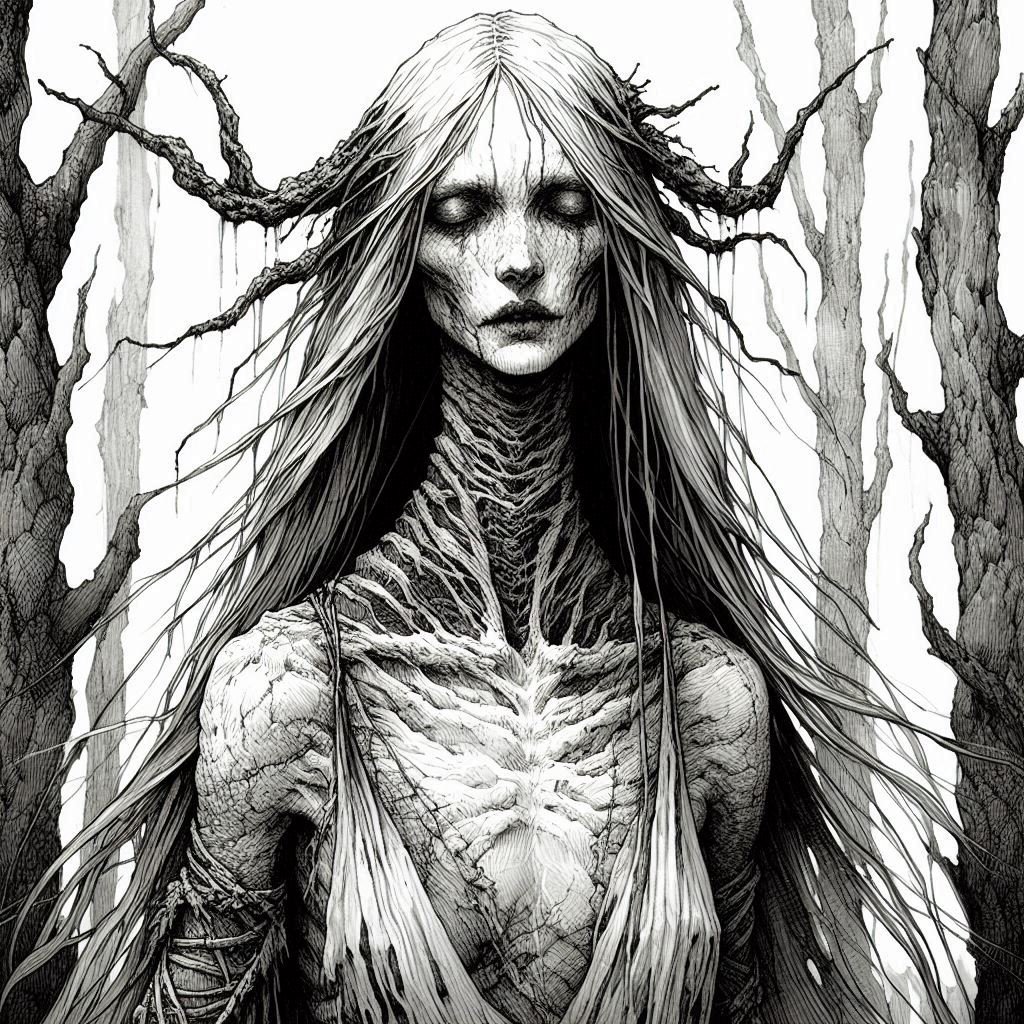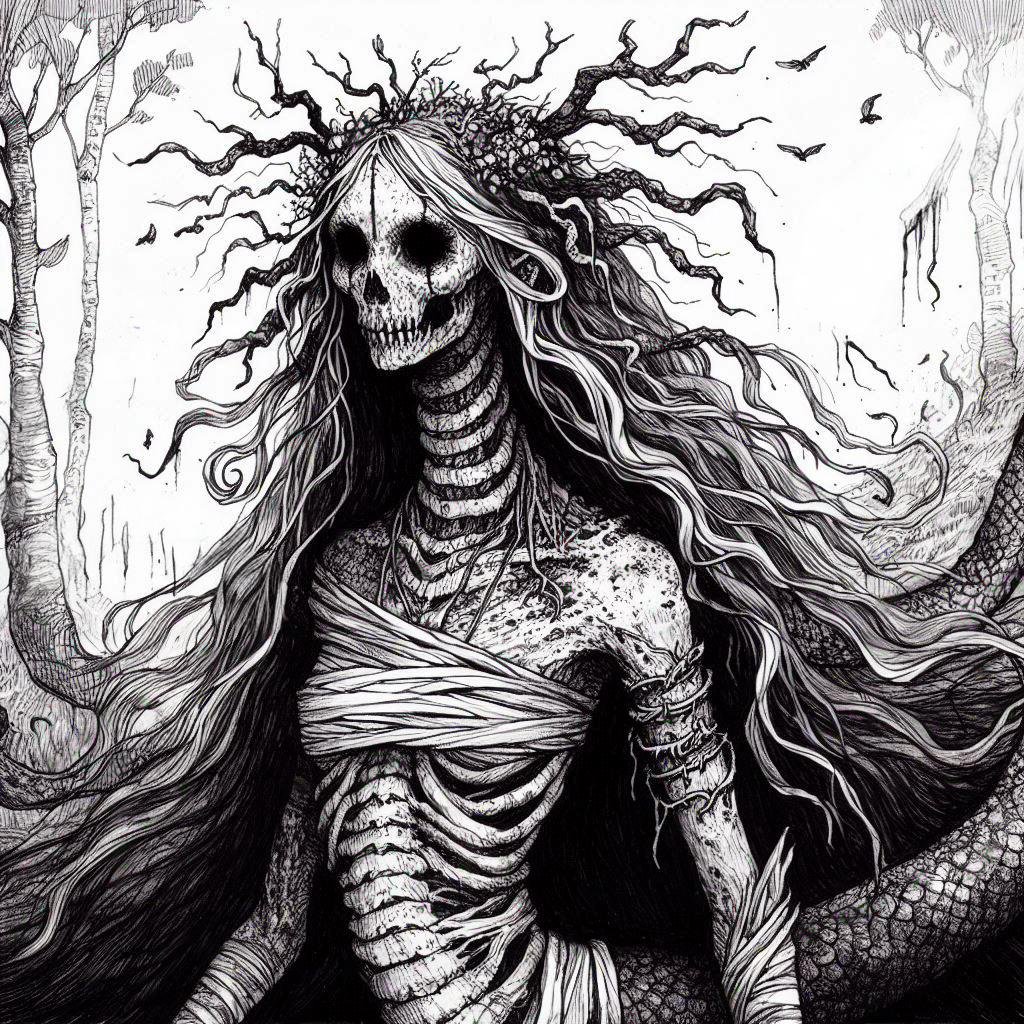
Ajatar
Ajatar
Bitter Winds Of Winter
Bitter Winds Of Winter
The Beginnings of Ajatar
Ajatar is from Finnish folklore, and she brings misery to the human world. There are fragmented stories around Ajatar and as with many folklore stories, they blend into one another forming fuller stories. What does seem to be agreed is that Ajatar is the daughter of Pestilence, and she embodies death and disease for the mortal world.
One story around Ajatar looks at her beginnings as one of the Pain Maidens, who were the three daughters of Tuoni, the God of Death. The Pain Sisters resided in the Northland on the Hill of Pain. At first, their role was a good one, taking away the pain from the world that was released by their grandmother and sealing it within stones that were unable to feel pain themselves. The Sisters of Pain were tasked with sorting through all the pain and torment of the mortal world before boiling them together in a black kettle.
Over time, this task caused the Sisters of Pain to suffer and one of the Sisters began to resent the role with which she was tasked. In order to take away the suffering of mortals, she was forced to take on the endless suffering herself and as a result, her youth and her beauty was fading. Finally, she had enough and left her sisters to travel into the mortal world where she became pregnant. Returning to her home in the Northland, she gave birth to her children; a large group of diseases and misfortune which was released onto the mortal world.
Ajatar is often represented by a serpent, with dark scales and large eyes. In this form, she can move through the forests without a sound, creeping up on unsuspecting mortals. In other descriptions, she is described in a more human form, with long hair in a plait down to her feet and larder breasts that swing down below her knees, which is not a very flattering description!
An interesting fact about Ajatar is the use of her name, or a variation of it, in the Finnish translation of the bible. For anyone interested in the etymology of words, Ajatar could come from the Finnish word ‘ajattaa’ which is to drive or pursue. Added to this the feminine ‘-tar’ can mean to eat or devour. There could, therefore, we a variation of her name which is Ajattaroille which is used in the Finnish bible translation when of Leviticus 17, chapter 7. If we look at the English translation from the New International Version, this would be:
“They must no longer offer any of their sacrifices to the goat idols to who they prostitute themselves. This is to be a lasting ordinance for them and for the generations to come.”
The King James version is a little harsher and uses devils instead of ‘goat idols.’
““And they shall no more offer their sacrifices unto devils, after whom they have gone a whoring. This shall be a statute for ever unto them throughout their generations.”
In the Finnish translation, the terms ‘goat idols’ or ‘devils’ is represented by the word ajattaroille.
“ja ei millään muotoa enää uhriansa uhraaman ajattaroille, joiden kanssa he huorin tehneet ovat. Se pitää oleman heille heidän sukukunnissansa ijankaikkinen sääty.”



